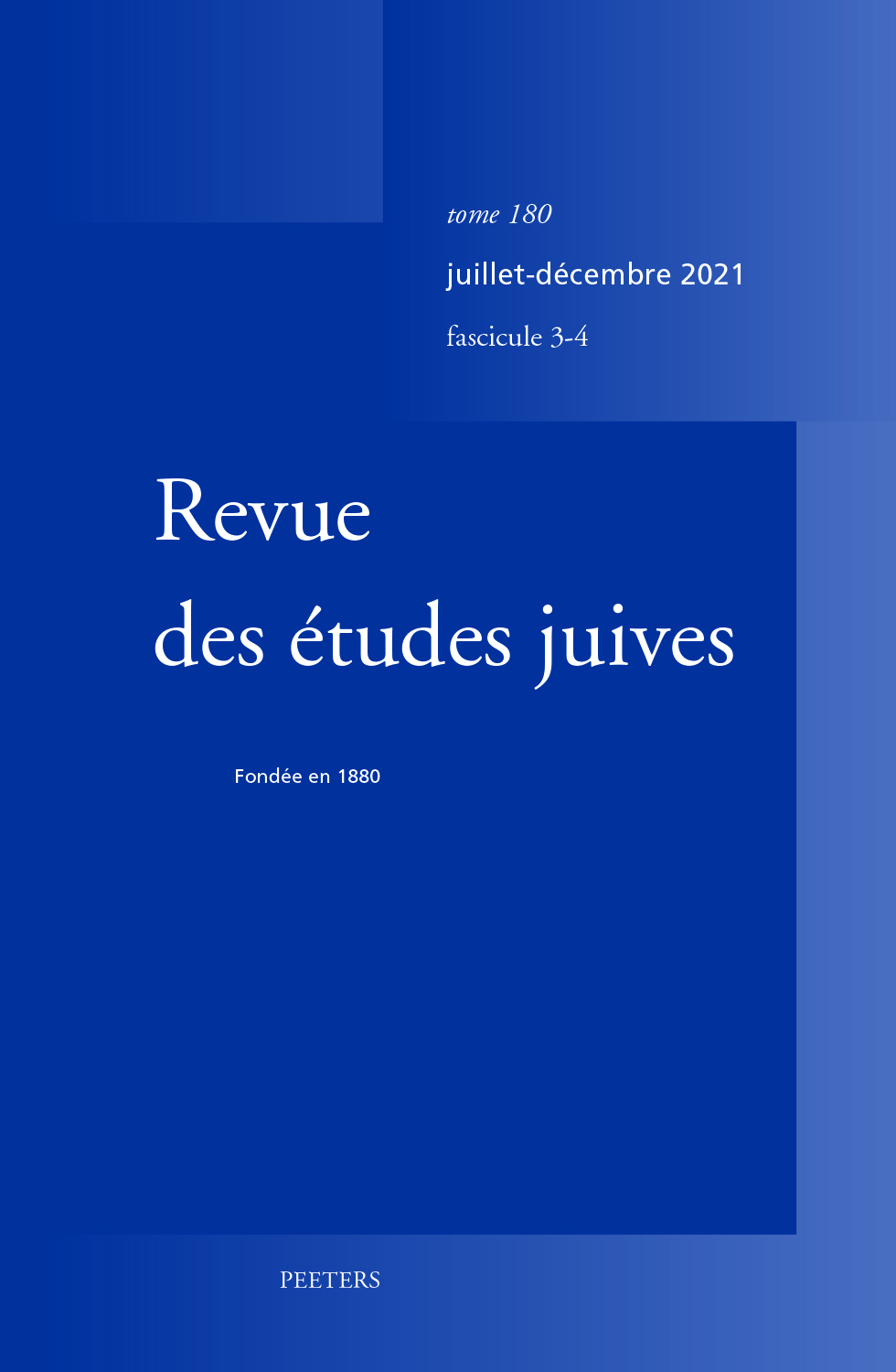 previous article in this issue previous article in this issue | next article in this issue  |

|
Document Details : Title: «Eternal King / King of the World» from ther Bronze Age to Modern Times Subtitle: A Study in Lexical Semantics Author(s): FUDEMAN, Kirsten , GRUBER, Mayer I. Journal: Revue des Études Juives Volume: 166 Issue: 1-2 Date: janvier-juin 2007 Pages: 209-242 DOI: 10.2143/REJ.166.1.2020282 Abstract : Dans la première partie de cette étude, nous explorons l’évolution sémantique des termes hébreux ‘olam et ha-‘olam d’une connotation purement temporelle à une connotation qui est à la fois temporelle et spatiale. Nous examinons aussi la tournure melekh ha-‘olam et suggérons qu’il s’agit d’une adaptation de mlk ‘lm (hébreu et ugaritique), qui signifie, “roi qui règne pendant longtemps.” Dans la deuxième partie, nous rapportons le traitement de ‘olam à la sémantique de saeculum (latin) et des mots romans qui en dérivent. Nous étudions finalement la manière dont ‘olam et melekh ha-‘olam ont été rendus dans des traductions de la Bible et du rituel juif, du XVe siècle à nos jours. In the first part of this study, we explore the semantic evolution of Hebrew ‘olam and ha-‘olam from a purely temporal connotation to one that is also spatial. We also examine the phrase melekh ha-‘olam, proposing that it is an adaptation of Biblical Hebrew and Ugaritic mlk ‘lm meaning “long-reigning king”. In the second part, we relate our study of ‘olam to the lexical semantics of Latin saeculum and its descendents in the Romance languages, bringing them together in an examination of the translation of ‘olam and melekh ha-‘olam in early Romance-language translations of the Bible and in translations of the Jewish prayer book from the 15th century to modern times. |
|
